When you think of living in Seattle, you probably think of the Space Needle, Pike Place Market, endless coffee shops, and houses overlooking the water or even on the water. But the houseboats circa “Sleepless in Seattle” aren’t actually houseboats – they’re floating homes. So what makes a floating house different from a houseboat? And if you’re considering life on the water, is a floating home right for you? Here’s what to know.
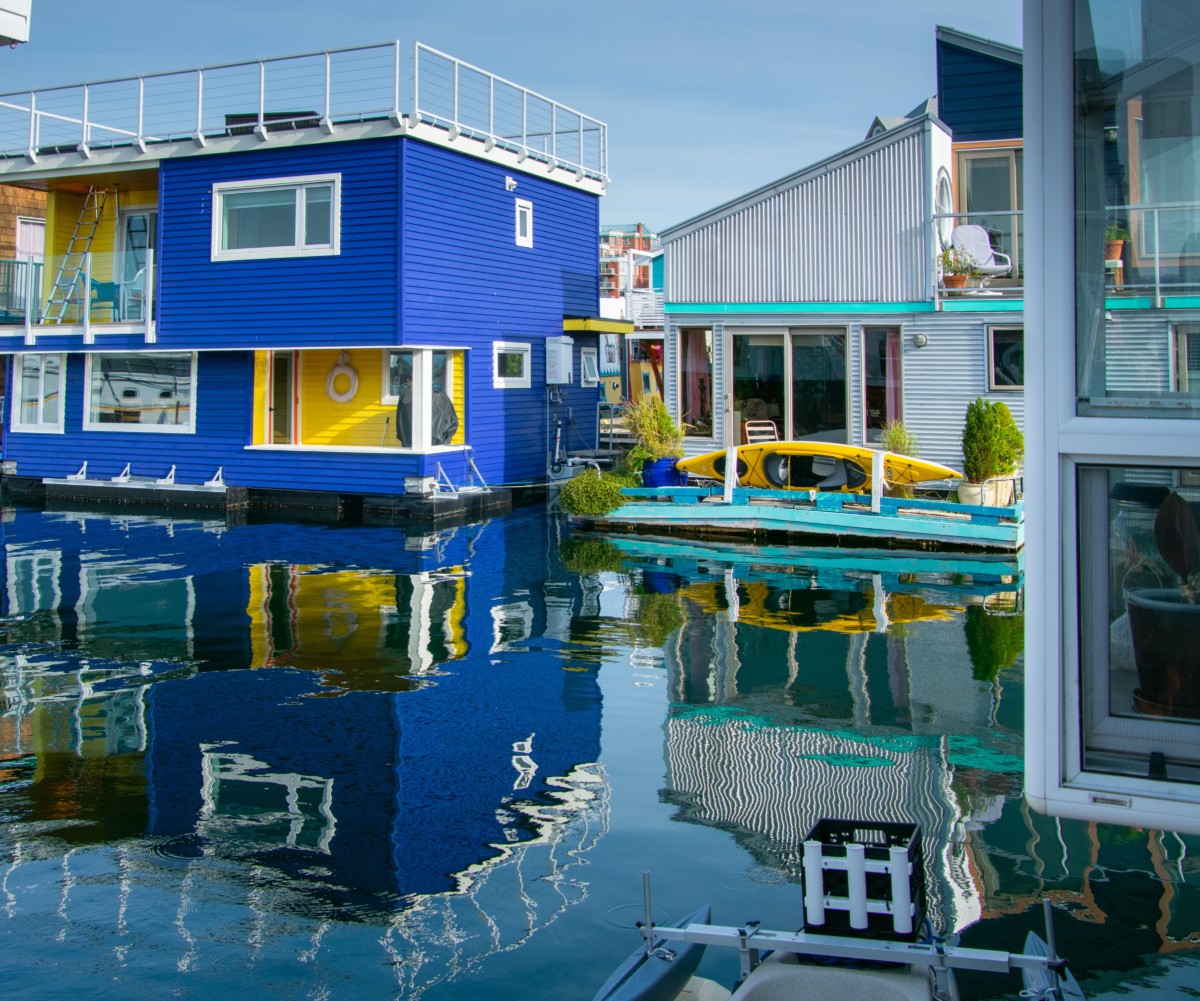
What is a floating house?
A floating house is a home located on a floating foundation and connected to utilities. Although used interchangeably, it’s not the same thing as a houseboat. A houseboat is a vessel with a motor that is not permanently docked in one area. This means a houseboat owner can move freely from one lake or river to the next. A floating home stays put on the dock where it is moored at.
History of floating homes
Floating homes rose in popularity during the early 20th century. Before permanently mooring homes on a dock, houses were anchored to the shore. They were a cheaper alternative to owning a traditional home. During the 1930s and 1940s, floating homes became particularly popular due to their building affordability and ability to provide low-cost housing options.
Floating houses are most notably associated with Seattle, WA‘s Lake Union, Portland, OR‘s Hayden Island, and Sausalito, CA. You can also find floating homes across the world in locations like Denmark, Australia, and Germany. In densely populated areas, these home styles have risen in popularity to combat rising population growth in cities. They’re also emerging as a more sustainable alternative that easily adapts to flooding.
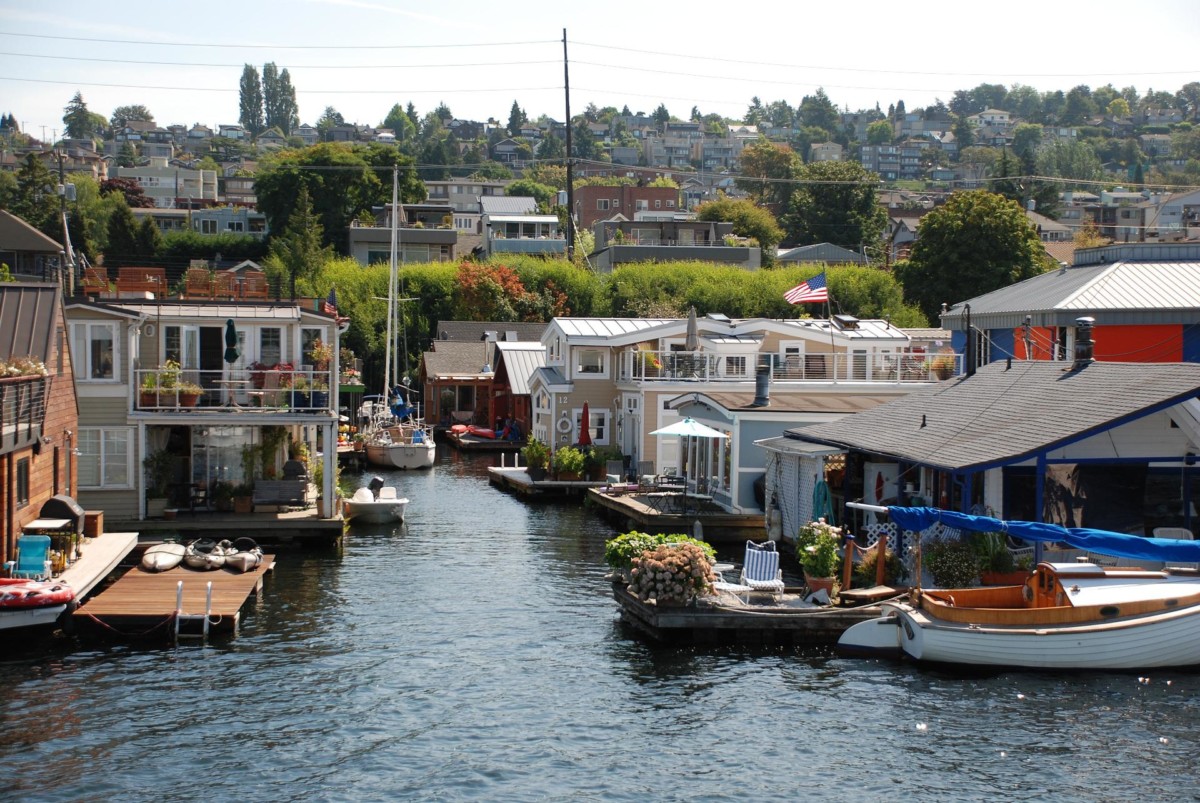
Floating home characteristics
Floating homes can range in size from the square footage of a tiny home to multiple stories. You can typically find them on a lake, bay, or river.
Exterior architecture
The main commonality of a floating home’s exterior is that they are grounded to a floating foundation also called a moorage. They’re typically more rectangular, with a flatter roof and many windows. Otherwise, floating homes vary in design. The exterior architecture can range from contemporary style to a rustic look. Many floating homes have balconies, a rooftop deck, or dock-side patios to embrace the waterfront views.
Interior design
The interior of a floating house isn’t much different from a standard-looking home. They can be sleek and modern with floor-to-ceiling windows or embrace a more cozy cabin look with wood-paneling and a fireplace. Some floating houses have multiple stories, or they may be quaint single-story cottages.
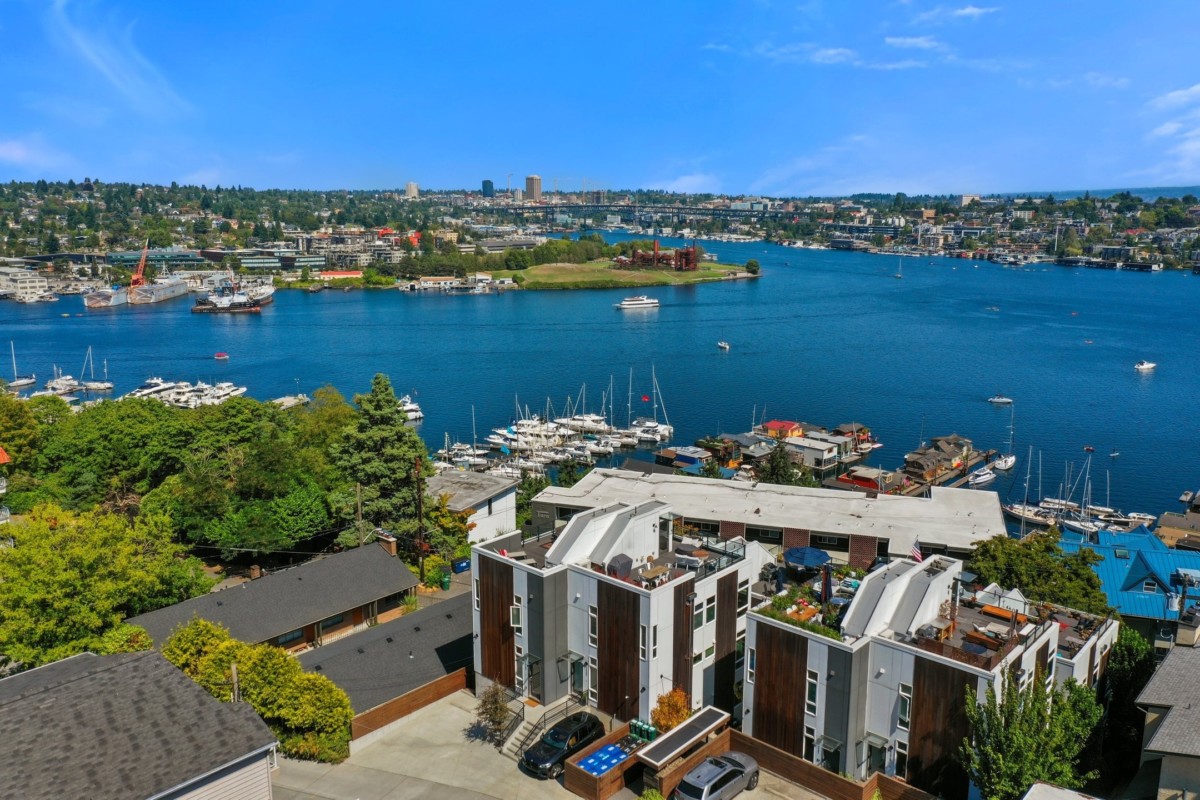
What to expect when buying a floating house
Buying a floating house is a little different from buying a home. In fact, it’s more like buying a condo. If you’re building a floating house from scratch, you’ll need to find moorage for rent or purchase. However, many existing floating homes are already secured to a moorage. In some cases, the previous owner may have owned the moorage. You may be able to purchase the moorage in addition to the house.
In other cases, only the home’s structure may be for sale, meaning you’ll likely pay rent for the moorage, similar to HOA fees. And you may also have to pay HOA fees as if you were purchasing a condo. Depending on the moorage, there may be rules like an HOA, such as not allowing short or long-term rentals.
How much do floating houses cost?
Floating homes range in price – anywhere from $30,000 to upwards of $1 million. The initial price largely depends on the house’s size, location, and features. If you’re purchasing the mooring space separately, this is another cost to consider.
If you’re renting the mooring spot, this is a long-term cost to factor into your budget. Another long-term cost to consider is the HOA fees should your floating home be part of a community that requires HOA dues.
All homes require maintenance, but floating houses have special considerations. For example, the more furnishings you add to the home, or if you’re undertaking a renovation project, you’ll likely need more flotation pieces added to the bottom of the moorage. This will help keep your home at the right water level. You’ll also need to pay attention to your home’s siding as it can become damaged from excess moisture.
Financing a floating house
When you buy a home, you’ll most likely have a mortgage – unless you purchased the home with cash. Securing a mortgage can be trickier if you’re considering buying a floating home. You’ll have to find a mortgage lender willing to issue a mortgage for a home that isn’t on a permanent foundation. And if you’re considering a Federal Housing Administration (FHA) loan or a Department of Veterans Affairs (VA) loan, know that government-backed loans won’t finance a floating home.
Some lenders may require you to have a 20% minimum downpayment or a higher interest rate to offer you a loan. Make sure to weigh all your options before deciding which mortgage lender to work with and which loan fits your needs.
Is a floating home the right financial option?
Floating homes are a truly unique style of home and may be harder to sell in the long run. Not everyone is looking to buy a floating house, so if you’re not planning on living in the home for very long, it may not be the right option. Typically, floating homes are less expensive than traditional homes, so you may have more flexibility for other financial goals.
In some states, floating homes aren’t considered “real property,” meaning you may not have to pay property taxes. They may be classified as “personal property,” so you may have to pay personal property tax instead. However, tax laws change all the time, so it’s important to speak with a tax professional to learn about your state, county, and city tax laws.
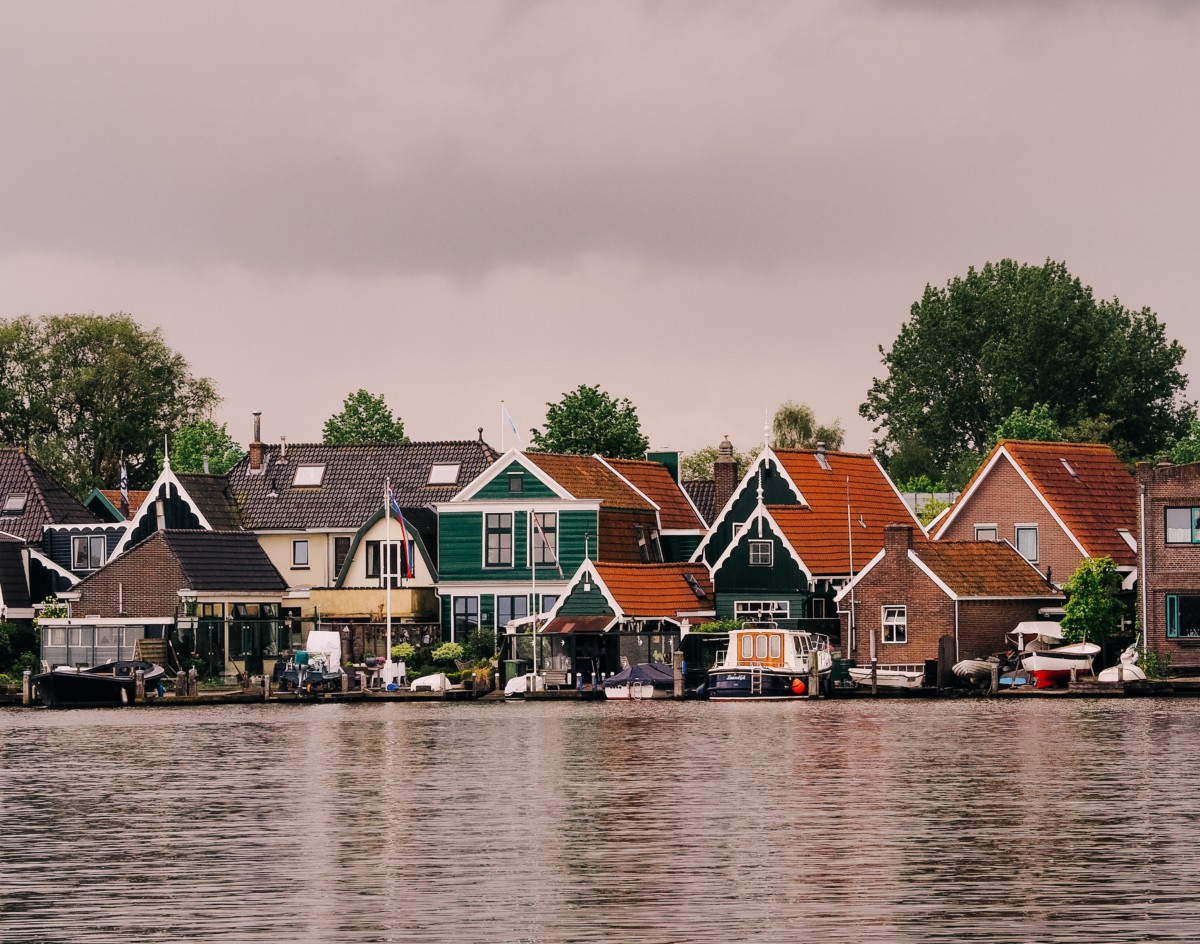
Pros and cons of floating homes
Floating home ownership isn’t for everyone, but if you’re setting your sights on a sea-level home, there are a few pros and cons to consider before taking the plunge.
Pros of a floating home
Community based: Similar to tiny home communities, living in a floating home community you may find other homeowners with similar interests.
Better suited for flooding: At first, it sounds counterintuitive, but floating houses can rise with water levels meaning they can fend off flooding better. So when a storm comes in, you may have better protection than if you were located on beachfront property.
Location and views: Easily one of the biggest pros of a floating house are the water views and location. You can’t get much closer to the water than living on it.
Less expensive than beachfront properties: Homes located on the waterfront or in certain beach communities are often more expensive than a floating house. You’ll have similar water views but for a less expensive price.
Cons of a floating house
HOA fees: One drawback is the ongoing costs of HOA fees and moorage rent each month. While homes may be less expensive, you’ll have to factor these costs into your monthly budget.
Property damage: If a big storm threatens your home, you may have more costly repairs. Depending on the roughness of the waters, it may be somewhat rocky on board, leading to damaged dishes, glassware, or other items.
Mortgage difficulties: If you’re buying a small floating home, it may be harder to find a lender since the house is not worth as much. However, this may not be a problem if the home price is more like a traditional home price.
Internet service: While homes are connected to public utilities like water and electricity, you may have unstable internet or cell service. However, this is largely dependent on whether your home is in a remote area.
Harder to find: Floating homes are often harder to find in certain regions. And in some places, like Seattle’s Lake Union neighborhood, new construction floating homes are not permitted, so you’re limited to the existing inventory.
How to find a floating home in your area
If you’ve decided that life on the water is right for you, Redfin can help you find a floating home in your area.
1. Go to Redfin.com and type into the Search Bar either the city’s name or the zip code (for example, Seattle, WA) where you’d like to begin looking for a house. Press enter.

2. Near the top of the next page, on the right side, you will see “All filters.” Click on that and scroll to the “Keywords” box near the bottom of the page.

3. Type the word “float,” “waterfront,” or “floating” into the Keywords box and press Apply Filters. That’s it. Homes within the city name or zip code you entered will populate the page, and you’ll be able to begin your search.
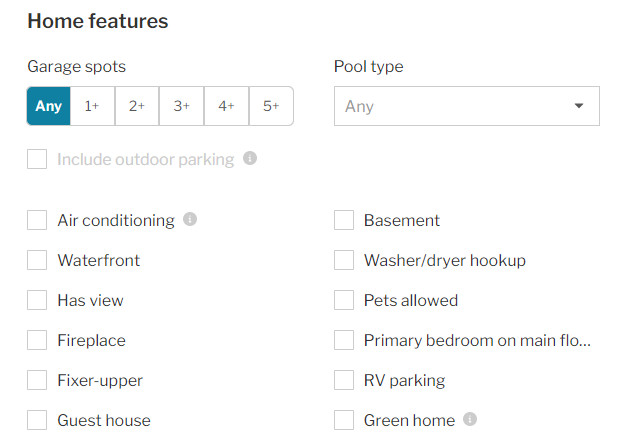

The post Floating House? Hint, that Doesn’t Mean You Live on a Boat appeared first on Redfin | Real Estate Tips for Home Buying, Selling & More.
from Redfin | Real Estate Tips for Home Buying, Selling & More https://ift.tt/n6Sg4sT


No comments:
Post a Comment